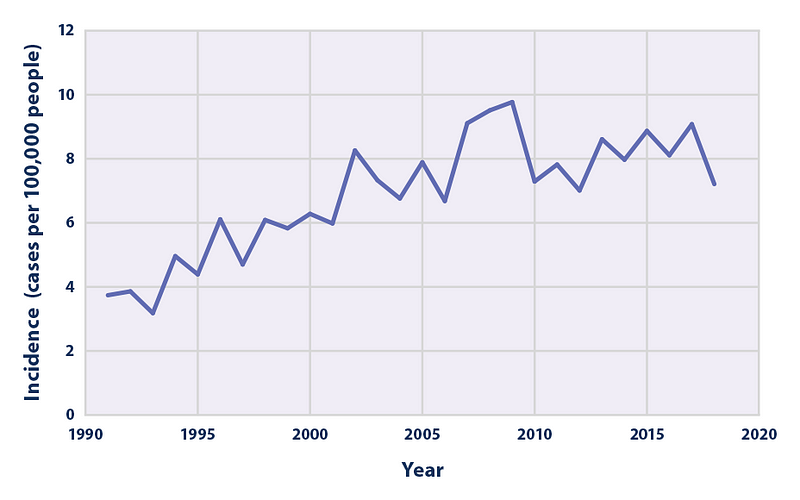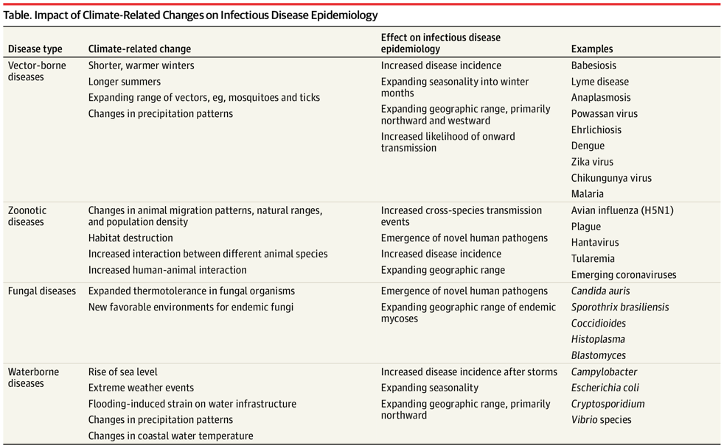The Unfolding Crisis: Climate Change and Infectious Diseases
Written on
Understanding the Threat of Infectious Diseases
As the sun dips below the horizon in Lima, a tiny but formidable adversary, the Aedes aegypti mosquito, is wreaking havoc across Peru. This minuscule insect, notorious for transmitting the dengue virus, has sparked a significant health emergency. Alarmingly, deaths attributed to dengue have surged threefold compared to last year. In response, Peru's government has declared a public health crisis to allocate necessary resources to combat the burgeoning mosquito populations.
Dengue fever is not merely an inconvenience; in its more severe forms, it poses a serious threat to life, particularly for vulnerable groups like infants and pregnant women. Symptoms range from nausea and rashes to potentially deadly internal bleeding, painting a dire picture of a community facing a relentless foe. Health officials are actively working through Lima, applying insecticides in areas where water accumulates, including flower vases in cemeteries and schools.
This situation in Peru serves as a crucial reminder for the global community. The outbreak emphasizes the wider ramifications of a warming planet and the diseases that flourish in such conditions. It is vital for everyone to understand how to respond to these challenges.
The Broader Implications of Climate Change
As 2024 unfolds, the repercussions of climate change continue to dominate discussions. However, our concerns should extend beyond visible disasters like wildfires and hurricanes; an equally pressing issue is the proliferation of infectious diseases. A recent study involving experts, including Dr. George R. Thompson from UC Davis and his colleagues from Harvard Medical School, highlights these urgent matters.
Published in the JAMA (Journal of the American Medical Association), the study reveals how shifting climates are altering the behavior of pathogens, vectors, and the animals that carry them. One significant observation is the increased prevalence of vector-borne diseases—illnesses transmitted by carriers like mosquitoes and ticks. Milder winters and prolonged summer seasons have led to ticks becoming active much earlier and remaining so longer, meaning diseases like Lyme disease are now a year-round concern.

Reported Cases of Lyme Disease in the United States, 1991–2018. Source: United States Environmental Protection Agency
Mosquitoes, requiring water for breeding, are particularly sensitive to environmental changes. Warmer temperatures enhance their breeding cycles, prompting female mosquitoes to seek more “blood meals” to nourish their eggs. This change has facilitated the spread of illnesses such as Zika and dengue fever, with Aedes aegypti mosquitoes extending their range northward, introducing these diseases to new areas in the United States.

Current distribution of temperature suitability for Zika transmission, by month. Results show the number of suitable months per year based on a 97.5% posterior probability for R0(T) > 0 based on the Tesla et al. (2018) model of Zika transmission, as a function of mean monthly temperature in each pixel. Source: Ryan, Sadie J., et al. “Warming temperatures could expose more than 1.3 billion new people to Zika virus risk by 2050.” Global Change Biology 27.1 (2021): 84–93.
The issue extends beyond just insects; larger animals involved in zoonotic diseases (those transmitted from animals to humans) are also affected. Changes in weather patterns disrupt food availability and habitats, driving these animals closer to human settlements and heightening the risk of disease transmission. The recent increase in hantavirus and plague cases in the western United States serves as a stark reminder of these shifts.

Photo by Alexas_Fotos on Unsplash
Another concerning trend is the rise of fungal infections. Many fungal pathogens struggle to survive at human body temperature, but as global temperatures rise, they adapt. The emergence of pathogens like Candida auris, a resistant fungus first identified in 2009, highlights the potential for increased occurrences in a warming environment.
Additionally, climate change is exacerbating waterborne diseases. Higher sea levels and intensified flooding elevate the risk of exposure to pathogens like Vibrio, which can lead to severe and potentially fatal infections. The aftermath of Hurricane Ian in 2022, which resulted in a spike of vibriosis cases in Florida, underscores how extreme weather can directly impact human health.
Preparing for Future Health Challenges
What does all this signify for us? The medical community is urging for preparedness in light of these shifts. Enhanced surveillance and diagnostic capabilities are essential for managing the evolving landscape of infectious diseases. Moreover, as emphasized by Dr. Thompson and his colleagues, there is an urgent need for continuous education within the medical sector to equip healthcare providers to confront these challenges effectively.

Table summarizing the impact of climate-related changes on infectious disease epidemiology. Source: Philips, et al., 2024.
However, the burden does not rest solely on the shoulders of medical professionals. Supporting policies aimed at reducing greenhouse gas emissions and recognizing the link between our choices and their environmental impact are crucial steps in mitigating the broader consequences of climate change.
While the situation appears daunting, proactive measures can be taken. With informed strategies and collective efforts, we can address these emerging health threats. As Dr. Matthew Phillips aptly states, “It’s not a hopeless situation. There are distinct steps that we can take to prepare for and help deal with these changes.” Staying informed and proactive is our best defense as the planet continues to warm.
Chapter 2: The Rise of Infectious Diseases
The second video examines the reasons behind the increasing frequency of infectious disease outbreaks, particularly in the context of the COVID-19 pandemic and beyond.